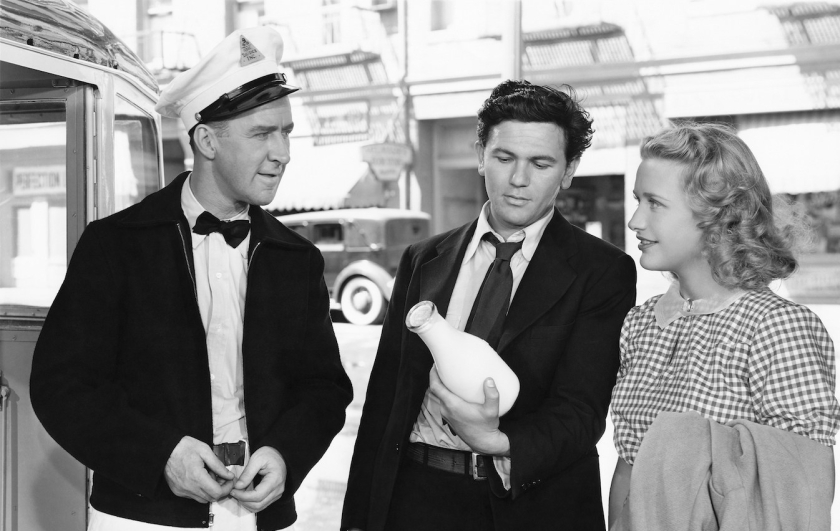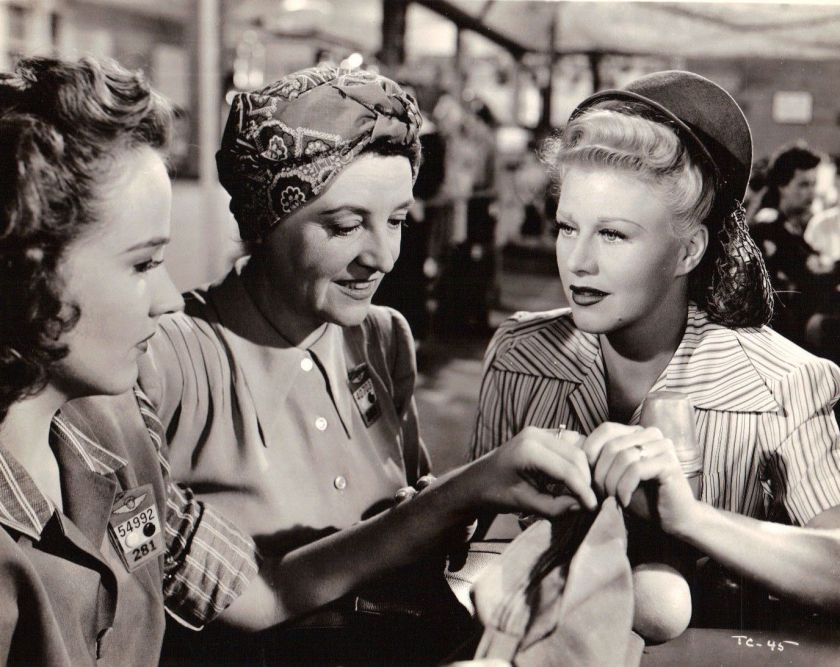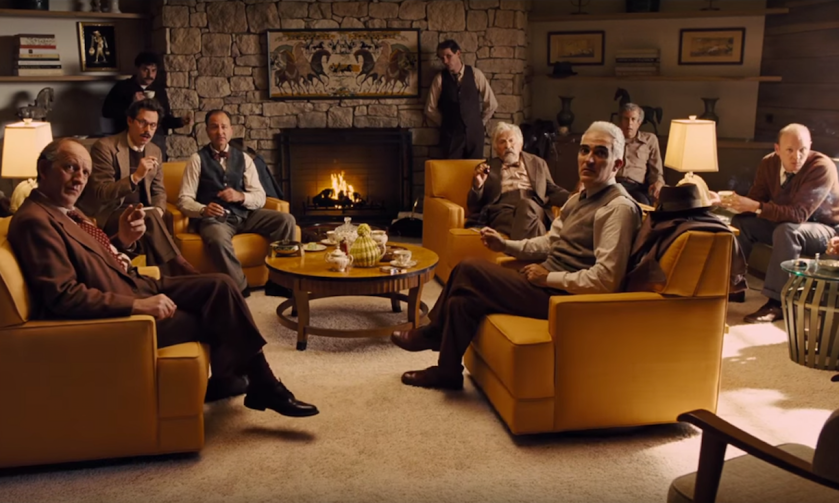
Cameras watch. Microphones listen. Invented as gadgets to amuse an audience—and profit its inventors—the movies have had an uneasy relationship with their ability to capture and replay the lives of others. More than a century ago, people across the world passed in front of the Lumières’ camera. Some stared, trying to divine its purpose. Others tried to avoid the contraption either knowing and not wanting any part of it or not knowing yet still preferring to slip out of view. Others were indifferent or unaware, never even looking. No matter how they felt about it, it was too late. They were already caught on film. In what remains we can still see their faces and make determinations about the expression in their eyes, their dress, how they move, long after they’ve gone.
Fast forward to now and cameras peer at us from the corners of elevators, parking garages, cafés, city streets, data piling up by the terabyte with the vague promise of keeping us safe. With the tiny lenses embedded in our computer screens and the handheld device nearly perfected, we have become complicit in our own spying, willingly recording our movements, cataloging our thoughts, posting them where they can be freely accessed, or clandestinely hacked. On the upside, we can more easily bear witness, but viewer (and viewed) have always needed to beware. The proscription on prying eyes is ancient; Perseus, Orpheus, and the wives of Lot and Bluebeard all got in permanent trouble just for looking. If a century of movies has taught us anything about watching and being watched, it’s that we should be more careful. From the keyhole shot in Lois Weber’s 1913 short Suspense to James Stewart’s telephoto lens in Rear Window, from the deadly tripod of Peeping Tom’s 16mm movie camera to Jake Gyllenhaal’s unblinking newshound Nightcrawler, watching is downright creepy and quite often deadly.

Watching a Lover: La captive
Like Vertigo’s Scottie wheeling around San Francisco in pursuit of his elusive Madeleine, Chantal Akerman’s camera is initially in collusion with Simon, closely tracking the inscrutable object of his strange affections down the narrow streets of Paris and the labyrinthine hallways of his creaky-floored home. Using Ariane’s friends to secretly control her movements, interrogating her repeatedly about her whereabouts, spying her while she sleeps, Simon is like a CIA agent of love who has tasked himself with catching her in a lie. Based on Marcel Proust’s La prisonnière, the fifth volume of In Search of Lost Time, La captive is a study in unhealthy obsession and its paltry rewards. (“I see you,” Ariane tells Simon, with her eyes closed.) By the end, the prisoner of the title is as much the tracker as the tracked.
Watching the Family: Á double tour
Another kind of obsessive love entraps the characters in Claude Chabrol’s first color film and first essay into the thriller genre, Á double tour. A little bit Hitchcock, a little bit Sirk, a little bit Belmondo, Chabrol’s study of the dangers of looking employs very few reaction shots, keeping the actors in the same frame while they circle each other, plotting self-destruction. The film begins with the oldest transgression of looking, a nearly naked fresh-faced maid hanging out the manor window in her underwear. The gardener watches from the hedges, the son watches through a keyhole, the milkman tells her to get dressed. Meanwhile the mid-life crisis husband keeps his mistress on full view in the adjacent house as the wife’s bitterness is angrily reflected in the vanity mirror and the French-door windowpanes. The only real love in the house is captured in quick silhouette, a warm yellow glow backlighting a dark stairwell just long enough for an urgent, surprising declaration. Amid it all, a murder still must be committed and then solved. Once the narrative falls skillfully together, whose crime and why were in plain sight from the very beginning.

Watching a Stranger: Gigante
You can’t really blame him for watching. It’s his job. Jara is a young oversized security guard at a massive supermarket in Montevideo, Uruguay, and, beginning at 11 pm, he enters the monochromatic midnight of surveillance monitors, keeping an eye on the bakers, the butchers, and cleaning ladies of the graveyard shift. Sometimes they pilfer and he overlooks it; sometimes he intervenes. When one of the new staff catches his eye for different reasons, he begins to observe her outside work as well. Jara learns little about Julia on his stakeouts, but the narrowly framed world he’s become accustomed to suddenly opens up into the wide spaces of the day-lit city. Gigante’s stalker is largely benign and his creepiness is leavened with humor—when he realizes, for example, that he’s hiding beneath a grocery store’s security camera. Eventually his spying becomes rather sweet but, as it turns out, altogether unnecessary. He could have avoided it all by simply revealing a bit of himself in the first place.
Watching the Neighbors: The Tenants
Looking doesn’t always lead to understanding, never mind any corrective. (Just think Antonioni’s Blowup and Francis Ford Coppola’s The Conversation, or, tragically, “I Can’t Breathe.”) Those living in South America’s former dictatorships know this too well and there’s an extra uneasiness about the act of watching. (Stuffed into Chevy Novas in the middle of the night and thrown out of airplanes in the middle of the desert make a people touchy about being monitored by others.) But now there’s a new social order, with São Paulo’s tightly packed working-class bordering an even more tightly packed slum in Sérgio Bianchi’s The Tenants, and other people’s lives are inevitably visible. When loud un-neighborly types move into the house next door to Valter and his small nuclear family, dark suspicions circulate up and down the street. Everybody’s watching, through the kitchen’s louvered windows, out the big bus, on the television. (One woman pulls up a beach chair on the sidewalk to get a better view.) Valter’s the only one who doesn’t want to see. When he finally looks it’s out of a salacious curiosity, and he learns that secrets are not just what’s piled up out back in the dark, but what’s right in front of you in broad daylight.

Watching the Watchers: The Prowler
Movie characters like the suddenly soft-hearted Stasi agent in The Lives of Others or Philip Seymour-Hoffman’s well-intentioned spy in A Most Wanted Man may be watching for our own good but they’re not the ones in control. Clearly, the state cannot be trusted with even a peephole onto our lives, something Joseph Losey knew in 1951 when he made this film noir. A cop, tired of being one, sets his sights on a better life, with someone else’s wife, and uses his (limited but effective) power to serve himself. The plot is set into motion over the credits: a shapely young woman alone at night draws the shade against a pair of prying eyes. The cops arrive, and she’s got another problem entirely, with the startling appearance of a uniformed Van Heflin—as insistently unblinking as Nightcrawler’s Lou Bloom—through a living room window. Later on, creeping around outside the house of the object of his desire, Heflin cuts a windowscreen and makes a racket to draw the husband outside. Two gunshots later and we can guess the outcome. When the lovers escape to a ghost town in the desert, their new neighbor-less view looks out through an enormous gaping hole in the wall—what’s rotten now resides inside and must be exposed. Cowritten by the blacklisted Dalton Trumbo and made just before the HUAC-hunted Losey left for Europe, The Prowler foreshadows the danger lurking today behind every computer screen.
Those Eyes Watching You: Dans la maison
All those eyeballs scanning the café over their laptop screens aren’t wondering so much about you as they are wondering what they can put down about you. The Grand Budapest Hotel’s (first) storyteller played by Tom Wilkinson, describes a writer as someone who doesn’t make things up so much as take them from the surroundings, and then, as his grandson shoots off a toy luger, issues a pronouncement that you later realize is a warning: “To him who has often told the tales of others, many tales will be told.” From The Front Page to Deconstructing Harry writers have gotten into all kinds of trouble for putting “what they know” on paper. A good story has to ring true and what better truth than something that actually happened? François Ozon—keeping pace with Woody Allen’s a film-a-year rate—adapted a Spanish-language play by Juan Mayorga for his adroit, unjustly overlooked Dans la maison about a young writer and his jaded mentor who’s grown tired of reading the work of his talentless students. The apprentice, the precocious teenage Claude, spins a riveting, soap-operatic yarn based on his visits to the house of a classmate, each set of pages ending on a tantalizing cliffhanger. The teacher begins to share these stories with his wife and they both become squeamishly riveted. Ultimately a jab at cultural elitism, Dans la maison also pokes at the ethics of looking (and sharing) someone else’s private world, while proving both are fodder for comedy and some pretty typical sorrow. Ozon’s warning, however, is not so much directed at the teller of tales, but at the writer’s accomplice—it’s the reader who needs to beware.
— Shari Kizirian © 2015
Originally published May 12, 2015, on the editorial pages of Fandor’s website and reprinted on HuffPost.


